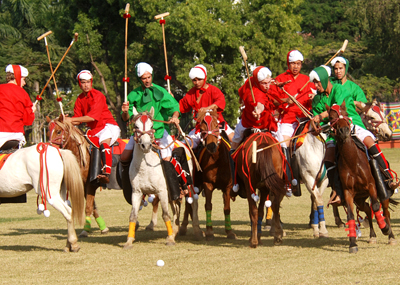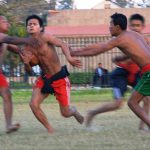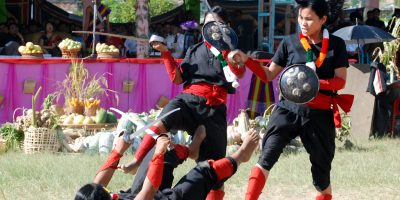Sagol Kangjei (Manipuri Polo):- The Sagol Kangjei has been adapted and adopted by the international enthusiasts of the game as Polo and now it’s now being played worldwide. Today, the world has accepted that the game of Polo originated from Manipur. The Manipuri Polo is played with seven players (in each side) who mount and ride ponies, which are usually 4/5 feet in height. Each player is fitted with Polo-stick made of bamboo root. The mounted player gallop after the ball to hit it straight into the goal. Extremely masculine and vigour-taxing, the exhilarating game is now played in two styles –the pana or original Manipur style and the international style and the international style i.e. Polo. It is heart- cheering to see Manipuri players in their sixties and even seventies riding ponies at full gallop playing Sagol Kangjei (polo) with gusto. The ponies are also decorated fully with various guards of protecting the eyes, forehead, flanks etc.
The Britishers learnt the nuances of the game of Sagol Kangjei in the 19th century from Manipur and after that clever refinement, the erstwhile indigenous game was renamed Polo and played in other parts of the globe.






